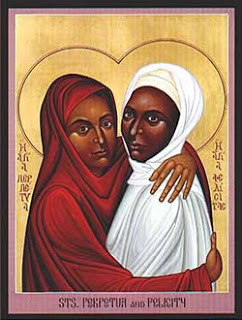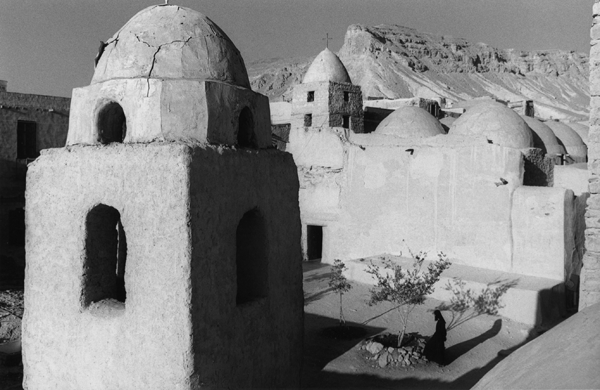Lifted from the All Saints Byzantine Church website, without permission. Sorry.
Byzantine Catholics
In the mountainous region of Carpatho-Rus, known also as Carpatho-Ruthenia, situated between present day Slovakia and Ukraine, there is a group of Eastern Christians. Evangelized in the ninth century by those equals-to-the-apostles, Saints Cyril and Methodius, this group received the Holy Gospel and Sacred Mysteries (Sacraments) from the Byzantine Church of Constantinople. Although Cyril and his brother, Methodius, were Greek (from Thessalonika), they promoted the use of the ancient Slavonic language in worship. This language, later known as Old Church Slavonic, would become the liturgical language of the Carpatho-Rusyns and all Slavonic Christians, both Orthodox and Catholic. In time, Cyril and Methodius brought their liturgical books to Rome to receive the blessings of Pope Hadrian, and he in turn blessed their mission of establishing the Greek (Byzantine) Catholic religion in the Carpathian mountains of Central Europe.
Over time, a rift grew between East and West; and, in 1054, estrangement was realized with the Great Schism of Constantinople and Rome. Being an Eastern Church, the Carpatho-Rusyns were eventually drawn into by this unfortunate break and became members of the Orthodox Church. This ecclesia sui iuris (self-governing church) of Mukachevo-Uzhorod in time sought reunion with the Church of Rome, re-establishing its Catholic faith while maintaining the spirituality, ceremonies, and discipline of the Eastern Church. On April 24, 1646, in Saint George Castle Garden in Uzhorod, a number of priests and faithful proclaimed vocally their reunion with the Catholic Church, re-establishing the unity that Christ so ardently prayed for. From this nucleus would grow a reborn church which the Empress Maria Theresa of Austro-Hungary would later call "The Greek Catholic Church" -- "Greek" in its ritual, theology and art; "Catholic" in union with the Bishop of Rome. In time, the reunion would spread to other areas of Europe, and new eparchies (dioceses) would be created in such places as Presov (Slovakia), Krizevci (Croatia), Hajdudorog and Miskolc (Hungary).
In the 1870’s, the first wave of Carpatho-Rusyn immigration brought significant numbers of Greek Catholics to the United States of America. The first parish they founded on these shores was Saint Michael's in Shanandoah, PA followed by an establishment in Freeland, PA. Others were established in places like Wilkes-barre and Kingston, PA, and in Jersey City and Passaic, NJ.
The Greek Catholic Church in America continued to grow, and there was seen a growing need for hierarchial leadership. In 1905, Father Andrew Hodobay was sent by Rome as Apostolic Visitor to care for the immigrant church; but, being a Hungarian, he was not the proper leader for a predominantly Slavic church. Rome, then, in turn, sent two men to care for what would become two separate administrations for the American Greek Catholics: Father Peter Poniatishyn for the Ukrainians, and Father Gabriel Martyak for the Carpatho-Rusyns (Ruthenians). By this time parishes were springing up all over Pennsylvania, New Jersey, Ohio and the Northeast. In 1924 Rome raised the status of the American Greek Catholic Ruthenian community to that of an Exarchate (Apostolic Vicariate) with Bishop Basil Takach as its first Exarch, establishing Saint John the Baptist Cathedral in Pittsburgh’s Homestead/Munhall neighborhood as its seat. Meanwhile, Greek Catholic immigration continued from Carpathia as well as Hungary and Croatia. Not only were parishes and priests being established and assigned, but the Sisters of Saint Basil the Great received a call from Bishop Takach to minister to the immigrant church, and they eventually settled in Uniontown, PA, after a number of temporary locations.
As the decades of the twentieth century progressed, missionary efforts led to the establishment of parishes in California, Florida and even in Alaska. The term "Greek Catholic" would change to "Byzantine Catholic," stressing that the church was not Hellenic (Greek) in nationality, and that the spirituality and liturgical services were of the Byzantine Rite; also, English, now the vernacular, became the dominant liturgical language. The church was then honored in its growth and permanence by the elevation of Pittsburgh as an Eparchy (diocese) in 1963, with Bishop Nicholas T. Elko as first Eparch, after serving as Exarch since 1955. In addition, the East Coast was given their own Eparchy, Passaic, NJ, with Bishop Stephen J. Kocisko as first Eparch, and with the church of Saint Michael the Archangel designated as the Cathedral. The Eparchy of Passaic would encompass the entire eastern sea coast of the United States, from Maine to Florida. In 1968, Bishop Stephen Kocisko was transferred to the Eparchy of Pittsburgh, and subsequently Bishop Michael Dudick was consecrated and enthroned as the second Eparch of Passaic. The crowning achievement of this near century of ecclesiastical growth would be the creation, in 1969 by Pope Paul VI, of a Metropolian Church ecclesia sui uris based in Pittsburgh. This Metropolia would have as its suffragan sees the Eparchy of Passaic (covering the East) and the newly-created Eparchy of Parma, OH, (in the Midwest) governed by Bishop Emil Mihalik as its first eparch. The church of Saint John the Baptist in Parma, OH, would serve as Cathedral for the new eparchy. Bishop Mihalik endeavored to establish more churches in the outer-most parts of his eparchy in places such as Las Vegas, NV, Albuquerque, NM, and Denver, CO. The growth of these Western missions and churches was acknowledged by Pope John Paul II through the erection of a fourth jurisdiction for Byzantine Catholics: the Eparchy of Van Nuys, CA; and, through the selection of Bishop Thomas V. Dolinay (then Auxiliary Eparch of Passaic) as its first Eparch. He shepherded the Eparchy from his seat at Holy Protection of the Mother of God Cathedral in Van Nuys until he was chosen, in 1991, to be Metropolitan of Pittsburgh, succeeding the ailing former shepherd, Archbishop Stephen J. Kocisko. Consequently, the auxiliary Eparch of Passaic, Bishop George Kuzma, was enthroned as the second Eparch of Van Nuys, and, in 1997, moved his seat of administration to Saint Stephen Protomartyr Pro-Cathedral in Phoenix, AZ. In 1996, Bishop Michael J. Dudick retired after a long and pastorally beneficial ministry in the Eparchy of Passaic. Upon his retirement, the Holy Father appointed Bishop Andrew Pataki (formerly Eparch of Parma), as the third Eparch of Passaic.
The spiritual life of the Byzantine Catholic Church was and continues to grow with assistance not only from the Basilians of Uniontown, but also from Monasteries for men and women, such as The Basilian Fathers of Mariapoch, Matawan, NJ, as well as from Holy Dormition Franciscan Monastery, Sybertsville, PA.
The Byzantine Catholic Church is an Eastern Church in union with Rome; Carpatho-Rusyn in background and flavor, but indeed an American Eastern Church celebrating the Gospel in words, symbols, and action. We are unique in our mystical theology, blending the colors of our many ikons with the congregational acapella chants; raising up our hands and our fragrant incense in prayer and inviting you to come and see who we are and what we are all about as part of the Eastern half of the Universal Church.




